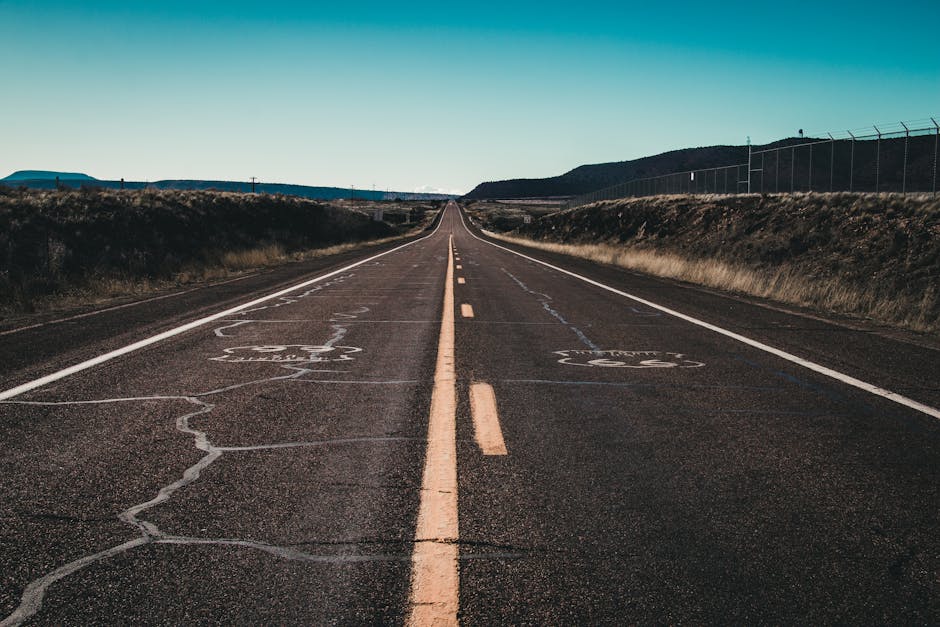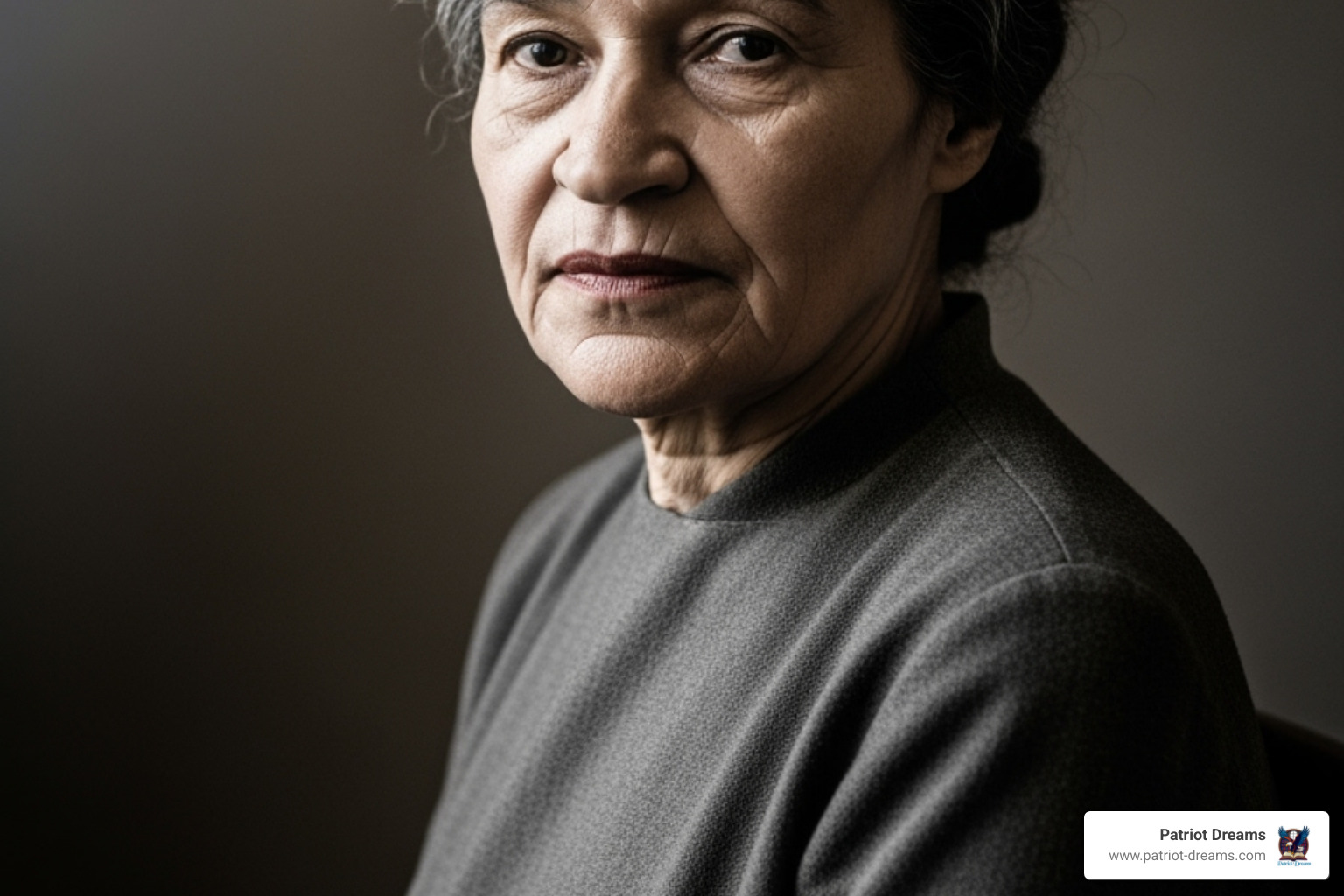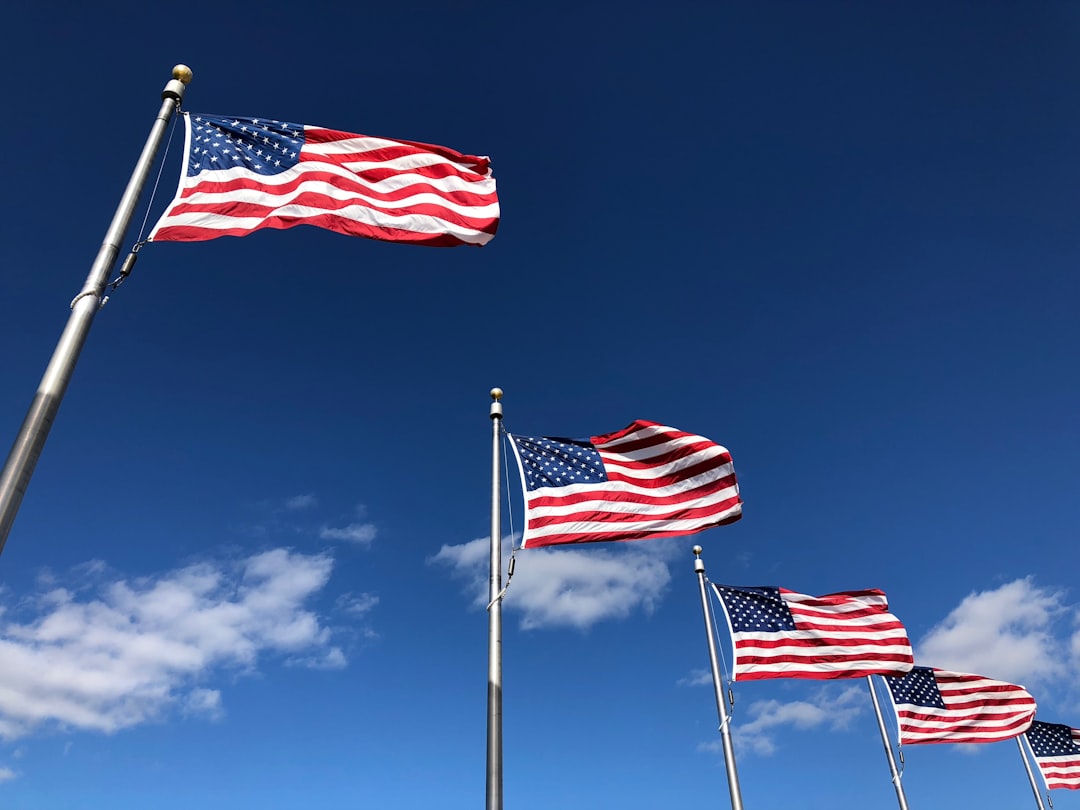Virginia Hall: The “Limping Lady” Who Outwitted the Nazis
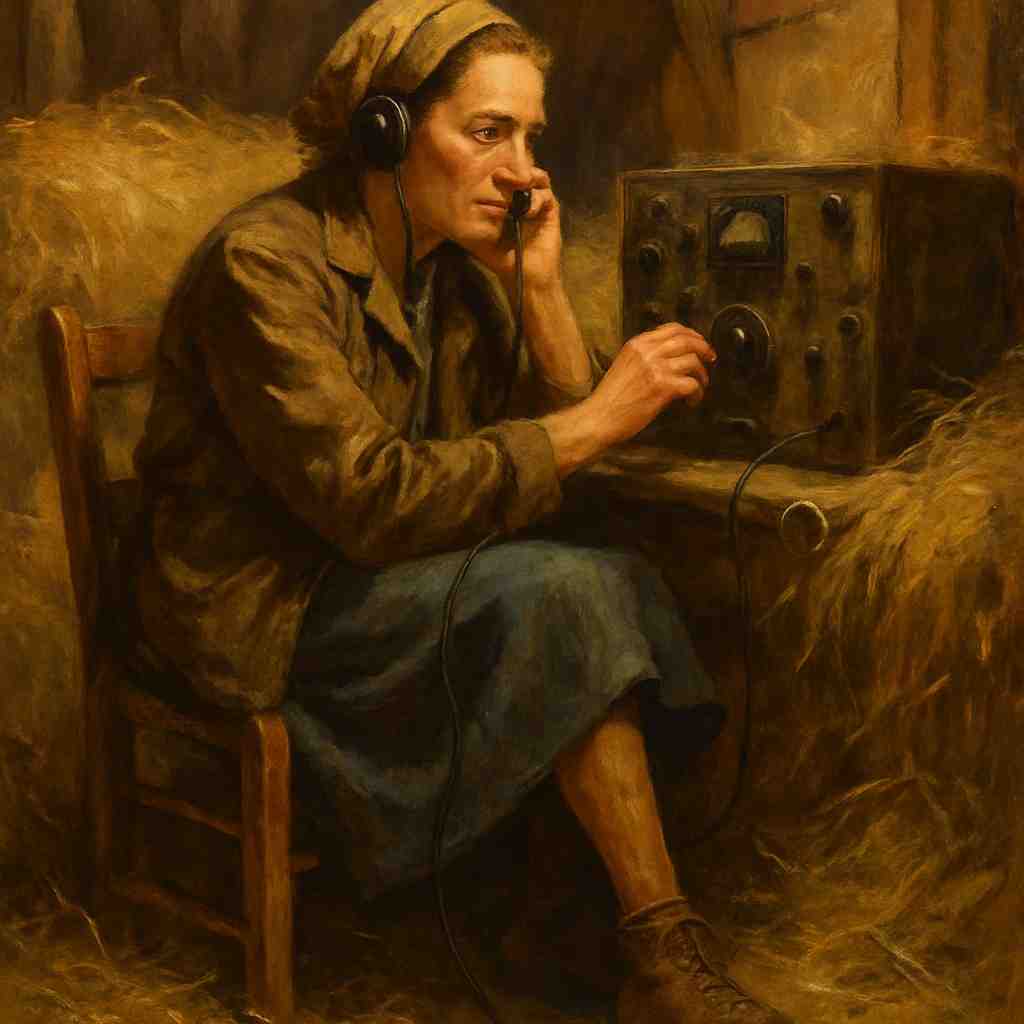

Why Virginia Hall Became Nazi Germany's Most Feared Enemy
Virginia Hall was an American spy who became one of the most effective Allied agents of World War II. Despite losing her left leg in a hunting accident, she organized resistance networks across occupied France and earned the deadly attention of the Gestapo.
Quick Facts About Virginia Hall:
- Nickname: "The Limping Lady" (given by the Nazis who hunted her)
- Prosthetic Leg: Named "Cuthbert" and weighed over 7 pounds
- Enemy Status: Called "the most dangerous of all Allied spies" by Klaus Barbie
- First Female Agent: To take up residence in France for British intelligence
- Unique Achievement: Only civilian woman in WWII to receive the Distinguished Service Cross
- Operations: Organized sabotage, helped downed airmen escape, and supplied resistance fighters
- Legacy: Evaded capture throughout the war despite being Nazi Germany's most wanted spy
Virginia Hall's story begins with broken dreams. She wanted to become America's first female ambassador, but faced rejection twice—first for being a woman, then for her disability after losing her leg.
Instead of giving up, she found a different way to serve her country. Working first for British intelligence and later American forces, she spent years behind enemy lines in occupied France. Her prosthetic leg made her instantly recognizable, yet she managed to stay one step ahead of the Gestapo through clever disguises and sheer determination.
The woman who couldn't become a diplomat became something far more dangerous—a master spy who helped pave the way for Allied victory.
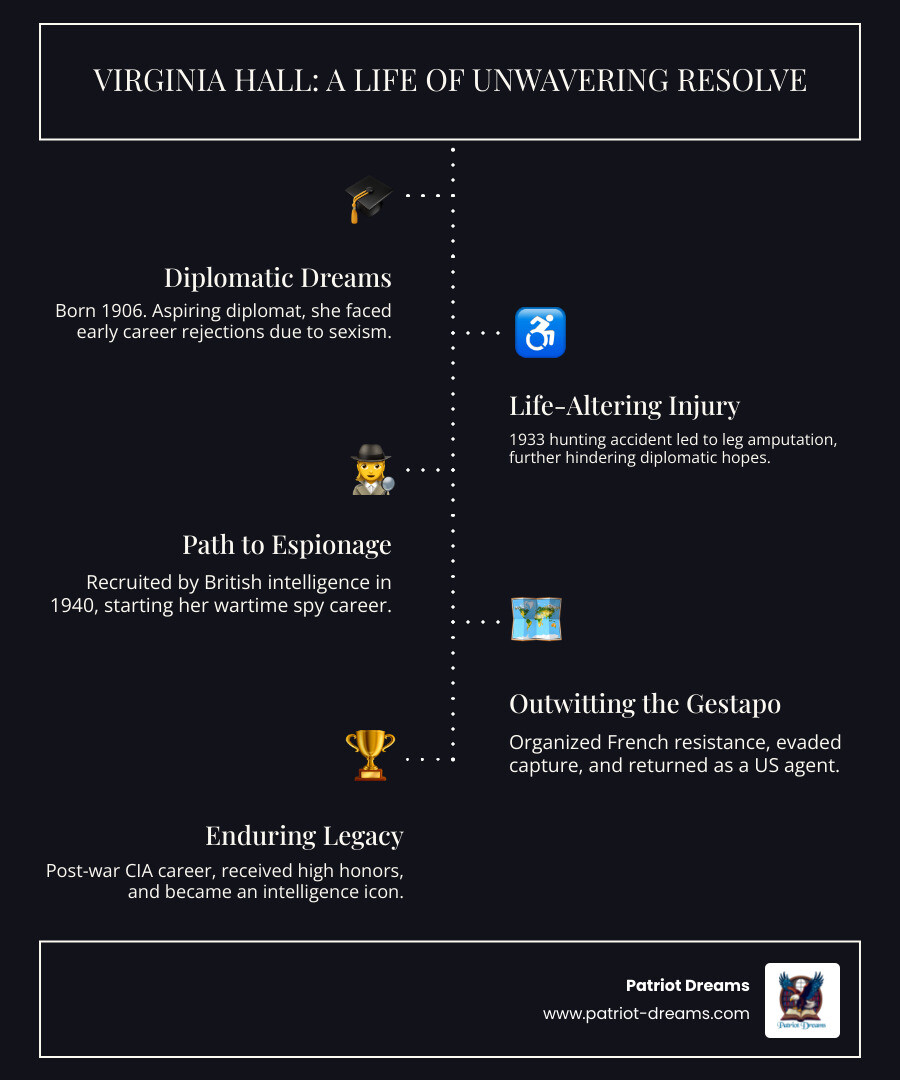
From Ambitious Diplomat to Accidental Spy
Before becoming a legendary spy, Virginia Hall was a young woman from Baltimore with big dreams. Her path to becoming Virginia Hall: The "Limping Lady" Who Outwitted the Nazis began not with espionage, but with academic ambition and crushing disappointment.
Virginia Hall's Early Life and Shattered Dreams
Born in Baltimore in 1906, Virginia Hall was extraordinary from a young age. At Roland Park Country School, she was known as "the most original of our class," once wearing live snakes as bracelets—a testament to her fearless personality.
Her sharp mind matched her spirit. At Radcliffe and Barnard Colleges, she became fluent in French, German, and Italian—skills crucial for her future. She aimed to be a diplomat, but the U.S. Foreign Service rejected her because she was a woman. An official callously dismissed her ambitions, reflecting the sexism ambitious women faced in the 1930s.
The Hunting Accident and "Cuthbert"
In 1933, her life changed dramatically during a hunting trip in Turkey. She accidentally shot her left foot, and the resulting gangrene forced doctors to amputate her leg below the knee.
Her heavy, seven-pound prosthetic, which she nicknamed "Cuthbert," was attached with uncomfortable leather straps. When Virginia applied to the Foreign Service again, she faced a second rejection due to a rule barring people with disabilities from diplomatic roles. The U.S. government was not ready for a woman with a prosthetic leg, despite her brilliance.
The Path to Espionage
Unable to be a diplomat, Virginia was in France when World War II erupted and refused to sit on the sidelines. She became an ambulance driver for the French army, and when France fell to Nazi Germany in 1940, she escaped to London, determined to fight back.
Rejected by her own government, she caught the eye of British intelligence. The Special Operations Executive (SOE) needed agents who could blend in, speak the language, and think on their feet. Virginia Hall was exactly what they were looking for.
Her language fluency, knowledge of French culture, and unshakeable will made her a perfect recruit. The SOE made her the first female agent to take up residence in France for British intelligence. The diplomatic career denied to her transformed into something far more dangerous and important.
Agent in Occupied France: A Legend Emerges
When Virginia Hall arrived in France in 1941, her mission grew into a resistance network that would help turn the tide of war.
First Female Agent in France
In August 1941, she arrived in Vichy France posing as a New York Post journalist. The cover story was a perfect disguise, allowing her to travel and ask questions. Based in Lyon, she began building resistance networks, recruiting and vetting locals. Her work included supplying agents with funds, arranging safe houses for downed airmen, and coordinating supply drops. Her effectiveness came from her attention to detail and her understanding that espionage was about blending in and building trust.
The Gestapo's Most Wanted
As her network grew, so did Nazi attention. The Germans codenamed her 'Artemis' and launched a manhunt. Klaus Barbie, the Gestapo's "Butcher of Lyon," called her "the most dangerous of all Allied spies." Reward posters described an American woman with a limp, but Virginia's skill at disguise and creative use of coded messages kept her one step ahead. Despite the constant threat of betrayal by informants and mounting pressure, she continued her work, and her narrow escapes became legendary.
Escape Over the Pyrenees
By November 1942, the Gestapo was closing in. With her network compromised, her only escape was a grueling 50-mile trek across the snow-covered Pyrenees into neutral Spain. For Virginia Hall, the journey was agonizing.
The winter crossing was brutal. 'Cuthbert', her seven-pound prosthetic leg, caused constant torture as the straps chafed her skin raw. She later called the crossing "the worst part of the war." During the escape, she sent a famous radio message exchange in code, warning that 'Cuthbert' was giving her trouble. A clueless London operator replied, "If Cuthbert troublesome, eliminate him."
Despite the pain, she persevered, reaching Spain to continue her fight. Her escape ensured the Germans' most wanted agent would return.
Virginia Hall: The "Limping Lady" Who Outwitted the Nazis
After her harrowing escape over the Pyrenees, most people would have quit. But Virginia Hall: The "Limping Lady" Who Outwitted the Nazis wasn't most people. Her desire to fight fascism burned brighter than ever.
A Daring Return to Occupied Territory
While recovering in London, the American Office of Strategic Services (OSS), the CIA's precursor, recruited her for her expertise in outsmarting the Gestapo. Knowing she was on wanted posters, she accepted what many considered a suicide mission. In March 1944, she returned to occupied France under the codename 'Diane'.
Her new role as a wireless operator was even more dangerous, as German detection equipment hunted for radio signals. But she knew the French Resistance was ready to act and just needed a spark.
How Virginia Hall Used Disguise
Her effectiveness came from her genius for hiding in plain sight. Her legendary elderly milkmaid disguise involved dyeing her hair gray, filing down her teeth, and adopting a shuffling gait. Ironically, 'Cuthbert', her prosthetic leg, became an asset. She learned to shuffle and hobble in a way that disguised her distinctive limp, fooling German patrols who walked right past an old peasant woman selling them cheese.
These complete character changes allowed Virginia Hall to operate under the very noses of her hunters.
Paving the Way for Allied Victory
Her second mission coincided with the lead-up to D-Day. The Allies needed the French Resistance to create chaos behind German lines, and Virginia was positioned to lead them. In central France, she organized and armed three full battalions of Maquis fighters (roughly 1,500 people), teaching them guerrilla warfare and sabotage.
The results were devastating for the Germans. Her teams cut sixteen railway lines, derailed eight trains, destroyed four railway bridges, and severed all telephone communications, preventing reinforcements from reaching Normandy.
Her most valuable contribution was intelligence. Virginia's detailed reports on German positions and troop movements provided crucial information for both D-Day and the Allied landings in Southern France. In the six months before D-Day, operations linked to her work destroyed over 1,000 locomotives and sabotaged more than 100 factories. Her effective methods later influenced CIA operations, including Operation Jawbreaker in Afghanistan.
As one resistance fighter put it, Virginia didn't just fight the war—she helped win it.
A Quiet Life and An Enduring Legacy
For Virginia Hall, the transition to civilian life after the war was not simple. The next chapters of her life would be quieter but also frustrating.
Post-War Service and Frustration in Intelligence Work
In 1947, she joined the newly formed Central Intelligence Agency (CIA). However, she faced a familiar enemy in the male-dominated agency: gender discrimination. Despite her extraordinary record, colleagues, perhaps intimidated by her legendary status, often sidelined her to desk jobs. It was a frustrating fate for a woman who had outwitted the Gestapo.
In 1957, she married Paul Gaston Goillot, a fellow OSS officer from the war. She served in the CIA until her mandatory retirement in 1966. A true professional, she remained private about her wartime exploits, never seeking the spotlight.
What Awards and Recognition Did Virginia Hall Receive?
Virginia's courage did not go unrecognized. She received the Distinguished Service Cross, the U.S. Army's second-highest honor, becoming the only civilian woman in World War II to do so. She declined a public ceremony with President Truman, fearing publicity would compromise future work, putting duty before glory.
Britain secretly made her an Honorary Member of the Order of the British Empire (MBE) in 1943, though the award wasn't formally presented to her family until 2006. France honored her with the Croix de Guerre avec Palme for her contributions to the French Resistance.
The Lasting Impact of the “Limping Lady” Who Outwitted the Nazis
Virginia Hall died in 1982 at age 76, but her legacy has grown. Her influence on modern espionage continues; her methods are still studied, and a CIA training facility is named in her honor.
Her story has been preserved in numerous books and films, including A Woman of No Importance by Sonia Purnell available on Amazon and The Wolves at the Door by Judith L. Pearson available on Overdrive.
Virginia Hall remains a powerful symbol of resilience, courage, and ingenuity. Her legacy reminds us that the greatest heroes are often those who simply did what was necessary, no matter the cost.
Frequently Asked Questions about Virginia Hall
People are fascinated by Virginia Hall, and we get lots of questions about her incredible story. Here are the answers to what folks ask us most often:
Why was Virginia Hall called the 'Limping Lady'?
The Nazis themselves gave Virginia Hall this nickname, and it wasn't meant as a compliment. Her prosthetic left leg, which she affectionately called 'Cuthbert', caused her to walk with a noticeable limp. This distinctive gait made her easy to spot in a crowd—or so the Gestapo thought.
Klaus Barbie and his fellow Nazi hunters used this physical trait to try tracking her down across occupied France. They figured her limp would make her impossible to hide. Little did they know that Virginia would turn this supposed weakness into one of her greatest strengths, using clever disguises and altered walking styles to blend in perfectly with the local population.
It's quite ironic when you think about it—the very feature that made the Nazis confident they could catch her became part of what made her so legendary at staying one step ahead.
What was Virginia Hall's most significant achievement?
While Virginia accomplished so many incredible things during the war, many historians point to her orchestration of the "Mauzac escape" as her most daring single achievement. She masterminded the breakout of 12 fellow agents from a heavily guarded prison camp, showing the kind of cunning and organizational skills that made her so dangerous to the enemy.
What makes this feat even more remarkable is that all 12 agents successfully made it back to Britain. In wartime espionage, that kind of success rate was almost unheard of. It took incredible planning, perfect timing, and nerves of steel to pull off something so audacious.
Of course, her broader work of building resistance networks, training Maquis fighters, and providing crucial intelligence for D-Day, probably had a bigger impact on the war's outcome. But the Mauzac escape perfectly captures the bold, never-give-up spirit that defined Virginia Hall.
Was Virginia Hall ever caught by the Nazis?
This might be the most amazing part of her whole story—no, she was never caught. Despite being the Gestapo's most wanted spy, despite having her face on reward posters across occupied France, despite Klaus Barbie calling her "the most dangerous of all Allied spies," Virginia Hall stayed free for her entire time behind enemy lines.
She pulled this off through a combination of brilliant disguises, coded communications, and sheer determination. When things got too hot in one area, she'd disappear like smoke and resurface somewhere else, often looking completely different. Her famous escape over the Pyrenees mountains—that brutal 50-mile winter trek with her painful prosthetic leg—shows just how far she'd go to avoid capture.
The woman who couldn't become a diplomat because of discrimination became the spy the entire Nazi war machine couldn't catch. That's the kind of poetic justice that makes her story so inspiring to this day.
Conclusion
Virginia Hall's story touches something deep in the American spirit. Here was a woman who refused to let rejection define her future. When the State Department said no because she was a woman, she didn't give up. When they rejected her again because of her disability, she found another way to serve her country.
Virginia Hall: The "Limping Lady" Who Outwitted the Nazis shows us what true patriotism looks like. It's not always about waving flags or making speeches. Sometimes it's about quietly doing what needs to be done, even when the odds seem impossible.
Her journey from Baltimore socialite to master spy reads like fiction, but it's beautifully, courageously real. She turned her greatest weakness—that heavy prosthetic leg that caused her so much pain—into her greatest strength. The Nazis knew to look for the limping lady, but she was always one step ahead, shuffling through French villages in disguise or selling cheese to the very soldiers hunting her.
What strikes us most about Virginia's story is how she handled success. She could have written books, given interviews, or basked in well-deserved fame. Instead, she quietly returned to work, asking only to keep serving her country. Even when the CIA pushed her into desk jobs because she was a woman, she stayed loyal to the mission.
Her legacy lives on in every person who refuses to accept "you can't" as a final answer. She proved that courage isn't about being fearless. It's about being terrified and doing what's right anyway.
At Patriot Dreams, we're honored to share stories like Virginia's because they remind us who we are as Americans. These tales of ordinary people doing extraordinary things shape our national character. Virginia Hall wasn't born a hero. She chose to become one, one dangerous mission at a time.
Find more incredible stories of American heritage that celebrate the unsung heroes who built our nation's legacy.
Join the Patriot Dreams Community
Download the app today and start your journey through American history and personal legacy.

Explore Our Latest Insights
Dive into stories that shape our American legacy.



